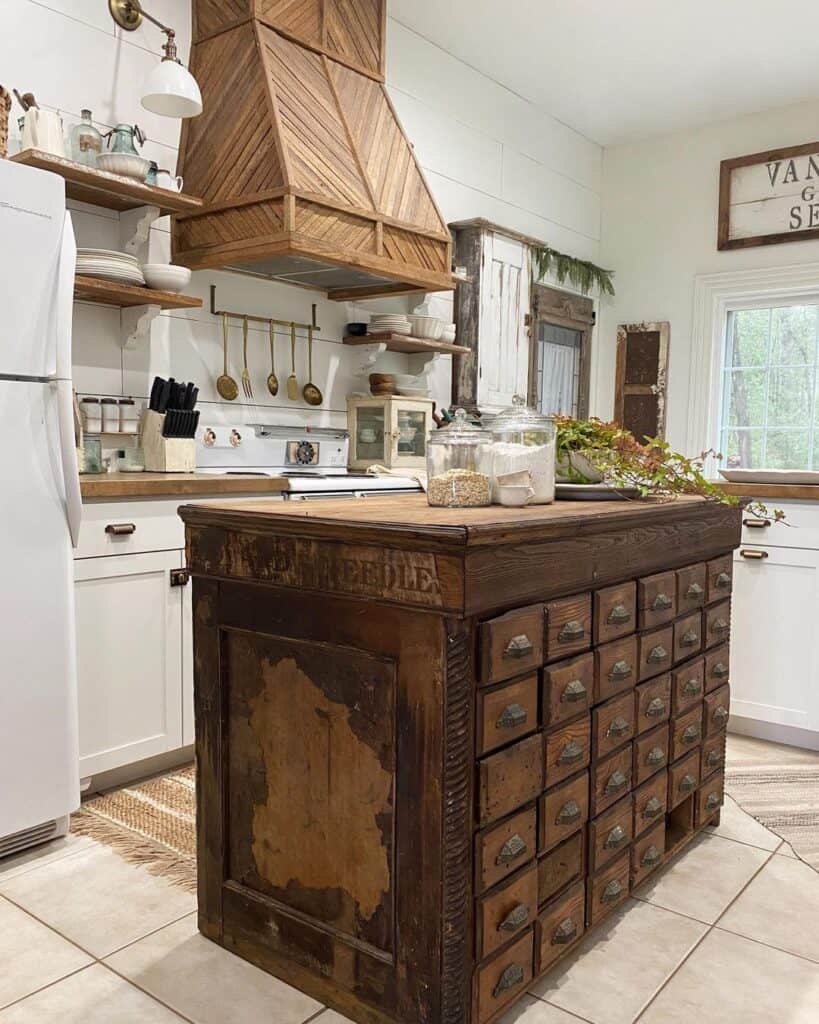In recent years, apothecary kitchen decor has gained a foothold in the hearts of homeowners, designers, and art enthusiasts alike. Merging vintage charm with functional beauty, this unique style is perfect for creating a warm and inviting kitchen atmosphere. In this comprehensive guide, we will explore the various elements of apothecary kitchen decor, share personal experiences, and provide you with practical tips to transform your space.
What is Apothecary Kitchen Decor?
Apothecary kitchen decor draws inspiration from traditional apothecaries, where herbs, spices, and medicinal solutions were stored. This aesthetic emphasizes vintage containers, earthy tones, and a harmonic blend of functionality and beauty. The key elements include:
- Glass jars for storage
- Natural materials like wood and ceramic
- Herbs and plants for decoration
- Vintage or rustic furniture and accessories
The Aesthetic Appeal of Apothecary Style

This decor style not only provides functionality but also brings a unique aesthetic to your kitchen. It focuses on:
- Vintage elements: The charm of old-world design is eye-catching and memorable.
- Natural materials: Using wood, clay, and glass promotes a warm and inviting ambiance.
- Herbal integration: Infusing greenery into your kitchen brings life and freshness.

Getting Started: Essentials for Apothecary Kitchen Decor
Before diving into the decor, consider these essential elements for setting the tone in your kitchen.

1. Glass Storage Jars
Glass jars are quintessential for any apothecary-style kitchen. They are functional and can serve as beautiful decor pieces. Here are a few types to consider:
| Jar Type | Usage | Style |
|---|---|---|
| Wide-mouth jars | Storing grains and spices | Rustic and practical |
| Small vials | Herbs and dried flowers | Charming and quaint |
| Apothecary jars | Decorative storage | Elegant and classic |

2. Natural Elements
Incorporate natural materials to create a harmonious atmosphere. Think wooden shelves, stone countertops, and ceramic dishes. Each piece should resonate with the overall theme of warmth and nostalgia.
Pros and Cons of Natural Elements
| Pros | Cons |
|---|---|
| Adds warmth and character | Can be expensive |
| Diverse texture and color | Requires maintenance |
| Eco-friendly options available | May not suit all lifestyles |

3. Decorative Plants and Herbs
Plants not only enhance the beauty of your kitchen but also contribute to a fresh environment. Consider herbs like basil, rosemary, and thyme for both decor and culinary use.
Personalizing Your Apothecary Kitchen Decor

One of the most enjoyable aspects of creating an apothecary kitchen is personalizing it to reflect your style. Here are a few tips based on my own experience.
1. Create a Herb Wall
Transform a small wall into a lively herb garden. Use small hanging planters or wall-mounted storage to display your plants. This not only looks stunning but is also functional.
2. Mix Old and New
Don’t shy away from combining modern and vintage elements. I have a beautiful vintage wooden cabinet paired with sleek, modern glassware, creating a unique juxtaposition that sparks conversation.
3. Use Vintage Finds
Scour flea markets and thrift stores for unique pieces that tell a story. I found an old apothecary cabinet that has become the centerpiece of my kitchen, filled with spices and herbal concoctions.
Creative Storage Solutions
In an apothecary kitchen, storage is as much about aesthetics as it is about functionality. Here are some creative storage options that resonate with the apothecary theme:
1. Open Shelving
Open shelves allow you to display glass jars and rustic dishes. This not only makes your kitchen feel more open but also shows off your curated collection.
2. Vintage Crates and Boxes
Using old crates as storage can add a rustic charm. They can serve as both decorative and practical storage solutions for vegetables, herbs, or even cookbooks.
Color Schemes to Consider
The color palette in an apothecary kitchen plays a crucial role in defining the space. Emphasizing earthy tones and muted colors can enhance the overall vibe.
1. Earthy Greens and Browns
These colors evoke a connection to nature and are perfect for creating a calm atmosphere.
2. Warm Neutrals
Warm whites, beiges, and soft grays can balance the natural elements and highlight your decor items.
3. Touches of Color
Accent your decor with pops of color from herbs, flowers, or kitchen accessories to create visual interest.
FAQs About Apothecary Kitchen Decor
What are the most important elements of apothecary kitchen decor?
The most important elements include glass storage jars, natural materials, and an abundance of plants and herbs.
How can I incorporate apothecary decor on a budget?
Look for vintage items in thrift stores, use DIY techniques to create decor, and choose natural elements from your garden.
Can I mix apothecary decor with other styles?
Absolutely! Mixing styles can create a unique and personal atmosphere. Combining vintage apothecary elements with modern design can be particularly appealing.
Are there any DIY projects for apothecary kitchen decor?
Yes! Consider creating your own labels for glass jars, building rustic shelving, or even repurposing old furniture with paint or refinishing techniques.
Conclusion: Making Your Apothecary Kitchen Yours
Apothecary kitchen decor is more than just a design style; it’s a way to express creativity and connect with the past. By incorporating vintage elements, natural materials, and personal touches, you can create a kitchen that is both functional and beautiful. Embrace the charm of an apothecary kitchen, and let your space tell your story.
As you embark on your decorating journey, remember that the process should be enjoyable and reflective of who you are. So gather your herbs, find those charming glass jars, and let your kitchen transform into a captivating apothecary haven.